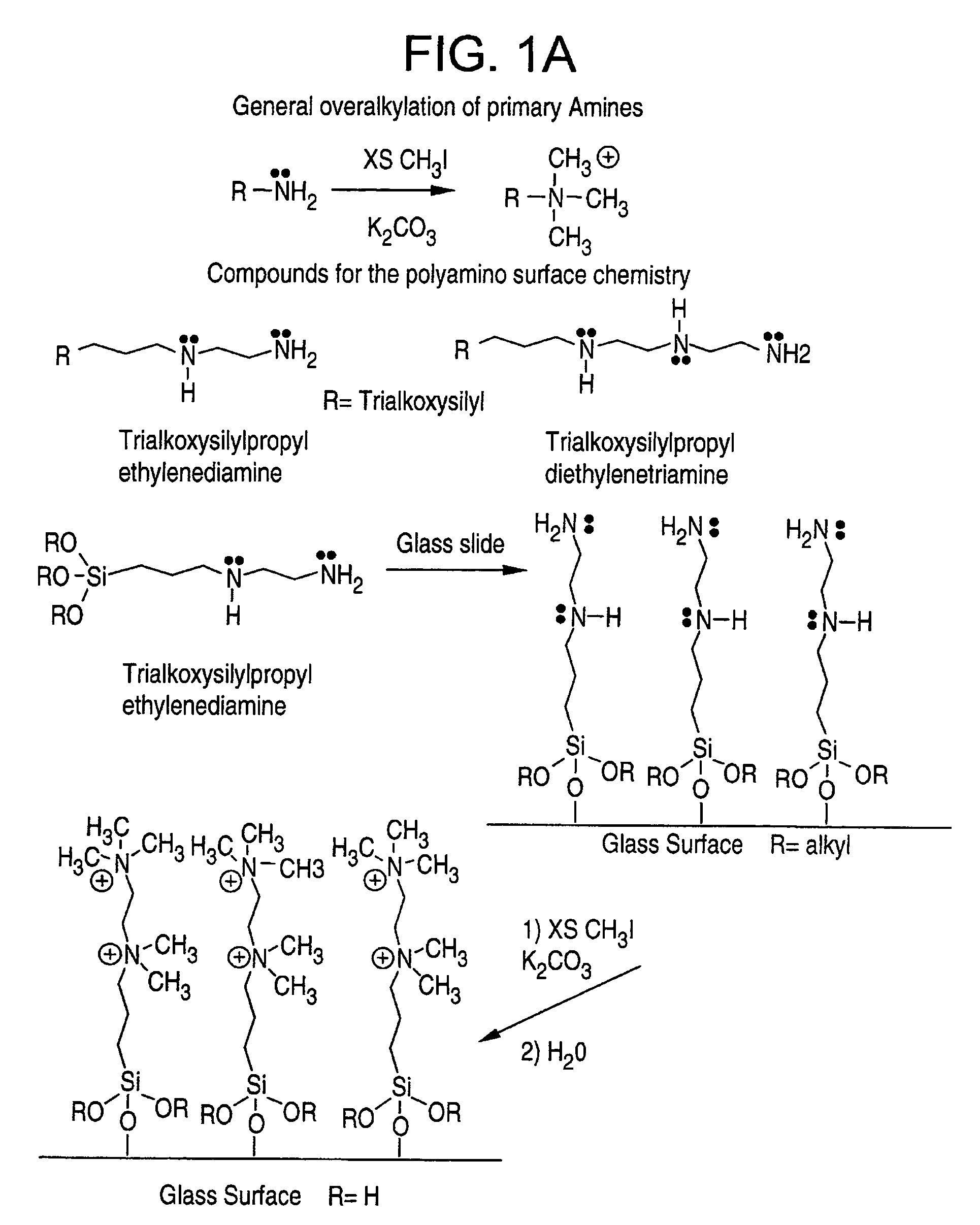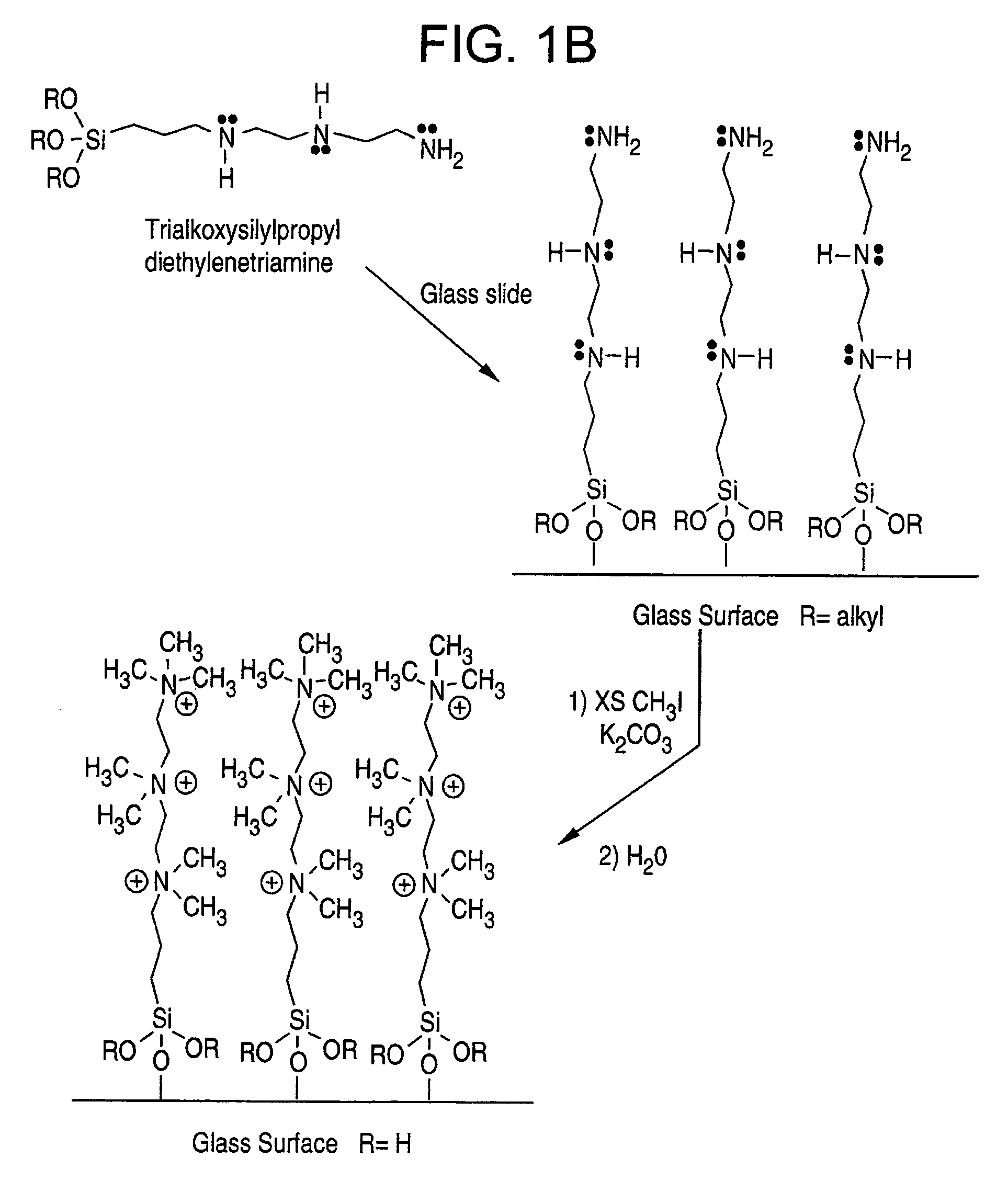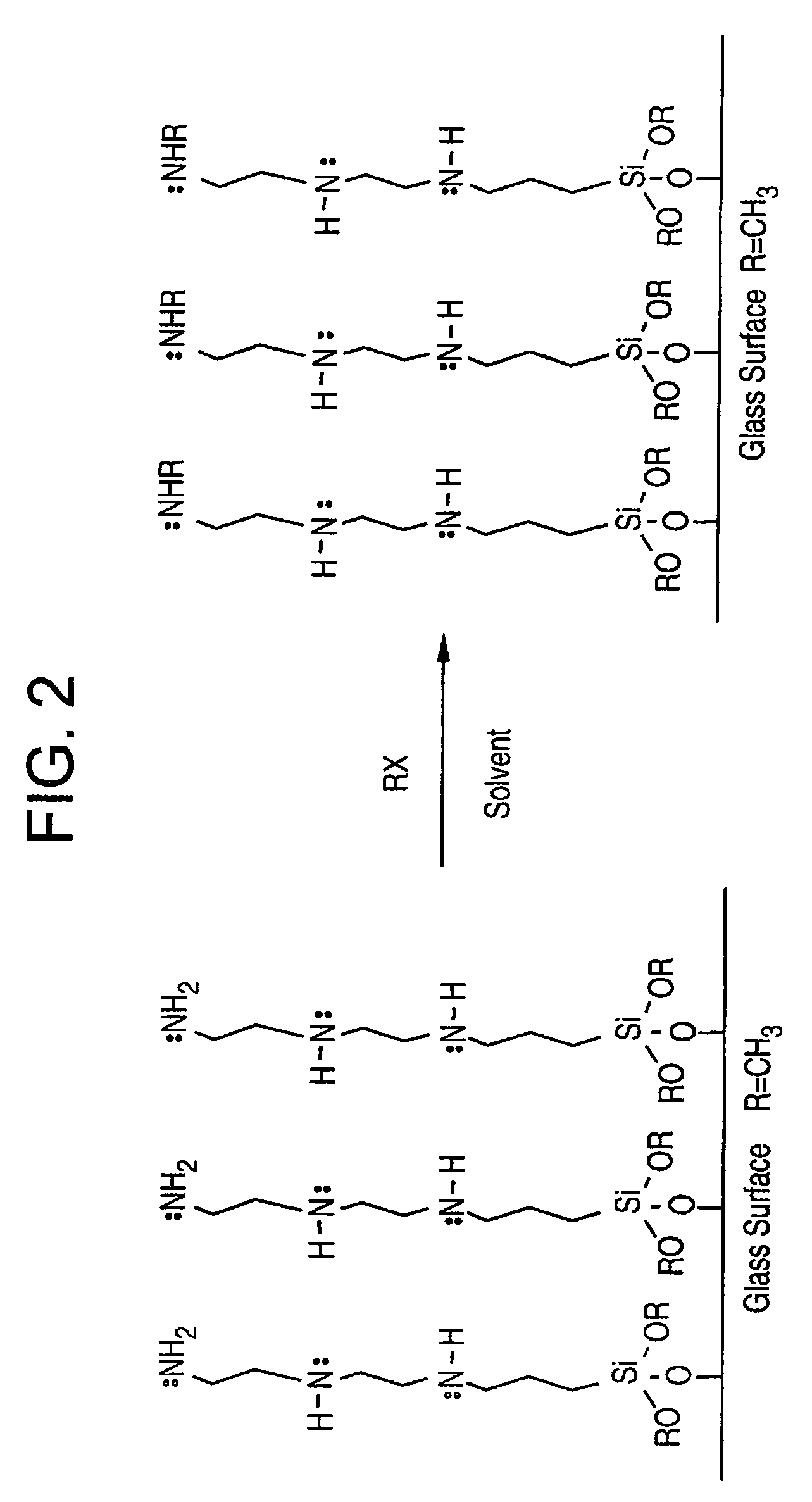Biomolecule retaining material and methods for attaching biomolecules to a surface
a biomolecule and retaining material technology, applied in the field of biomolecule retaining material and methods for attaching biomolecules, can solve the problems of low yield of desired product, false positives, and unrealistically, and achieve the effects of increasing the bond density of the surface, reducing false positives, and improving the signal to noise ratio (s/n)
- Summary
- Abstract
- Description
- Claims
- Application Information
AI Technical Summary
Benefits of technology
Problems solved by technology
Method used
Image
Examples
example 1
[0052]A set of slides were prepared with trimethoxysilylpropyl ethylenediamine. The procedure for coating the slides consisted of: (1) a base pretreatment to clean and activate; (2) baking for one hour at 100° C. to remove adsorbed water; and (3) coating with a 3-5% solution in THF (tetrahydrofuran) for one hour, followed by a work-up. The slides were then further reacted with a 5% solution of methyl iodide for one hour to exhaustively methylate (overalkylate) all the amines (one primary and one secondary in the case of the diamine). This overalkylation produces two ammonium ions per molecule on the surface which means that there are two positive charges per molecule.
[0053]The viability of the surface was then tested by applying some DNA and subjecting the slide to the harshest step in the hybridization procedure, which is the denaturation step (two minutes in boiling water). The surface coated slide was printed with DNA (1.5 Kb) using the Flexys printer and scanned in the array sca...
example 2
[0054]A set of slides were prepared with N1-[3-(trimethoxysilyl)propyl]ethylene diamine. The procedure for coating the slides consisted of: (1) a base pretreatment to clean and activate; (2) baking for one hour at 100° C. to remove adsorbed water; and (3) coating with a 3-5% solution in THF for one hour, followed by a work-up.
[0055]To test the viability of the surface coating it was printed and subjected to the harshest step in the hybridization procedure, which is the denaturation step. The surface coated slide was printed with DNA (1.5 Kb) using the Flexys printer and scanned in the array scanner. The slide was then placed in boiling water for two minutes and scanned again to see if the DNA was still bound (electrostatically) to the surface. As was seen by FIGS. 4A-D, some DNA still remained bound to the slide. There would of course be loss due to the fact that excess DNA was printed. The S / N was low due to the smearing of the DNA in the absence of blocking material which was appl...
example 3
[0056]In this example, a surface coated with trimethoxysilylpropyl diethylenetriamine was modified by reacting it with trifluoroacetic anhydride. This surface was then printed with DNA (1.5 kDa) using Gen II ink (EG:water 80:20) and scanned. The slide was baked in an oven at 100° C. for three hours and then immersed in boiling water for two minutes, dried, and re-scanned. As can be seen from the data in Table 1 below, the contact angle of the triamine surface went from 40°to just over 70°.
[0057]
TABLE 1RightLeftAver-Aver-LiquidSolidAngleAngleageHeightWidthageSlide #511 - TriamineD1Triamine38.540.739.60.028120.33047D1Triamine43.137.040.00.034320.34618D1Triamine43.941.242.50.033380.3196940.8D1Triamine44.346.145.20.039140.33785D1Triamine39.034.136.60.033830.34350Slide #511 - Triamine modified with trifluoroacetic anhydrideD1Triamine71.473.772.60.065320.25095D1Triamine70.371.871.10.070060.27747D1Triamine70.471.771.00.052790.2170871.8D1Triamine69.872.471.10.065090.25869D1Triamine71.374.67...
PUM
| Property | Measurement | Unit |
|---|---|---|
| water contact angle | aaaaa | aaaaa |
| water contact angle | aaaaa | aaaaa |
| water contact angle | aaaaa | aaaaa |
Abstract
Description
Claims
Application Information
 Login to View More
Login to View More - R&D
- Intellectual Property
- Life Sciences
- Materials
- Tech Scout
- Unparalleled Data Quality
- Higher Quality Content
- 60% Fewer Hallucinations
Browse by: Latest US Patents, China's latest patents, Technical Efficacy Thesaurus, Application Domain, Technology Topic, Popular Technical Reports.
© 2025 PatSnap. All rights reserved.Legal|Privacy policy|Modern Slavery Act Transparency Statement|Sitemap|About US| Contact US: help@patsnap.com



